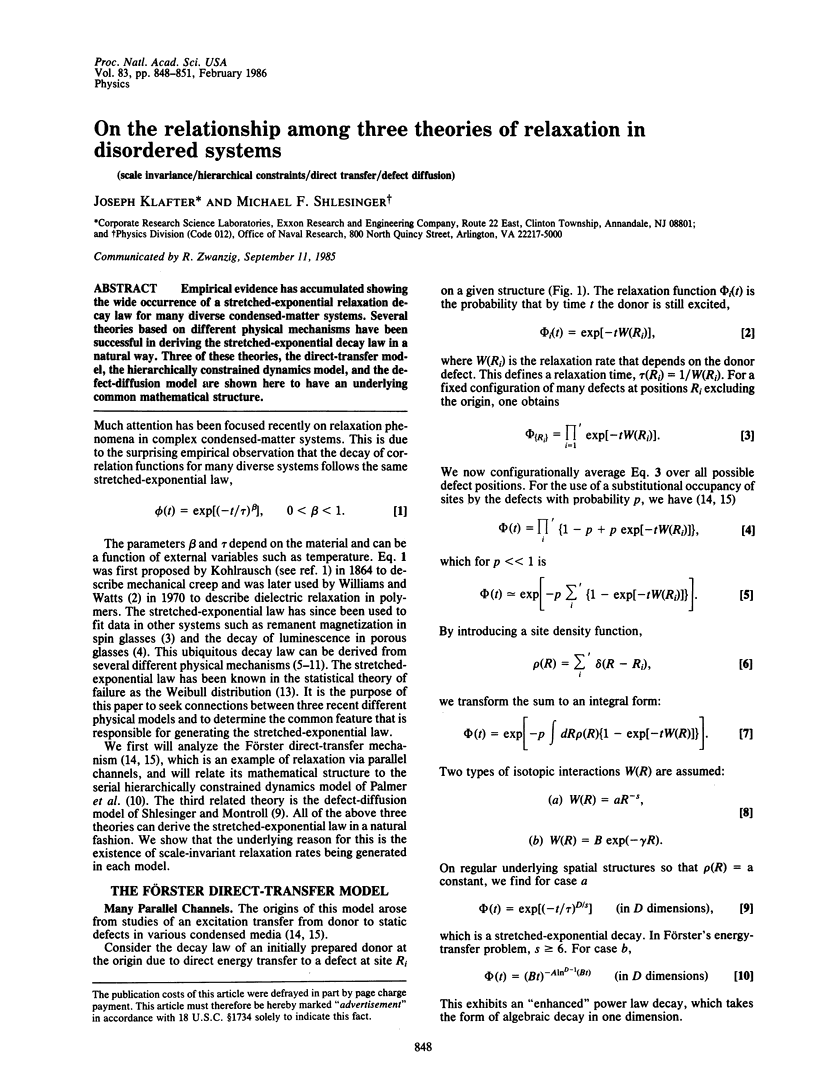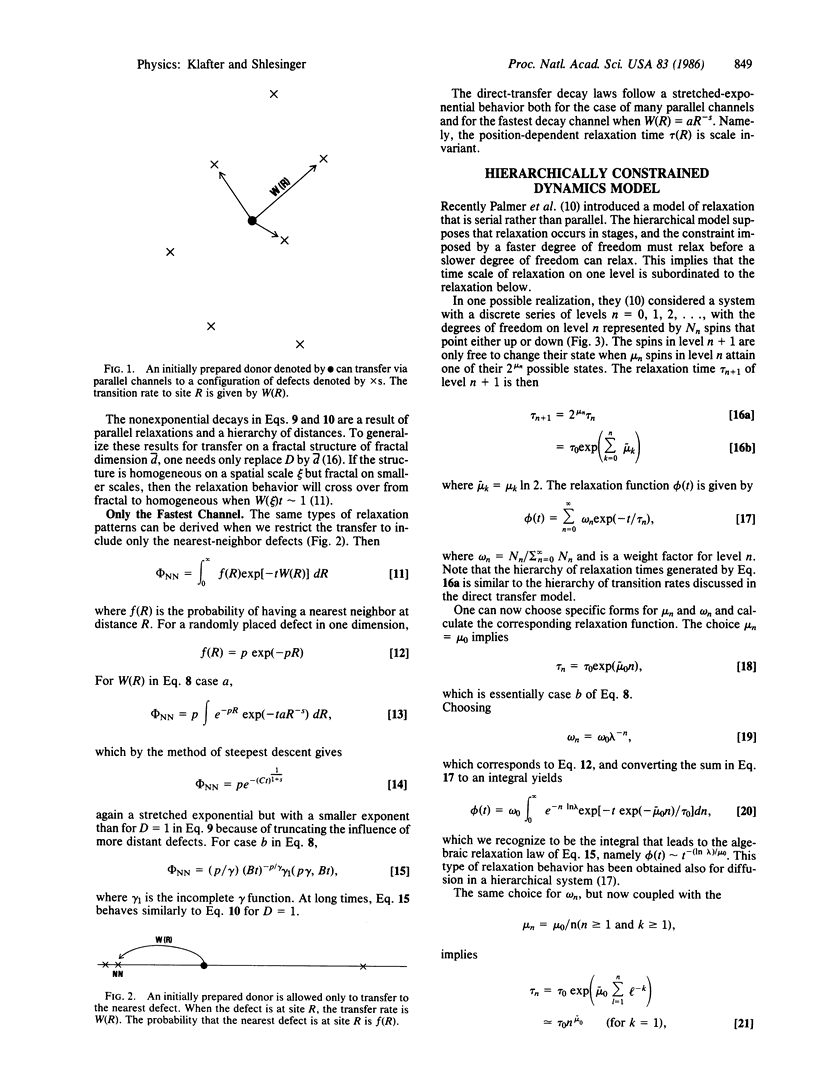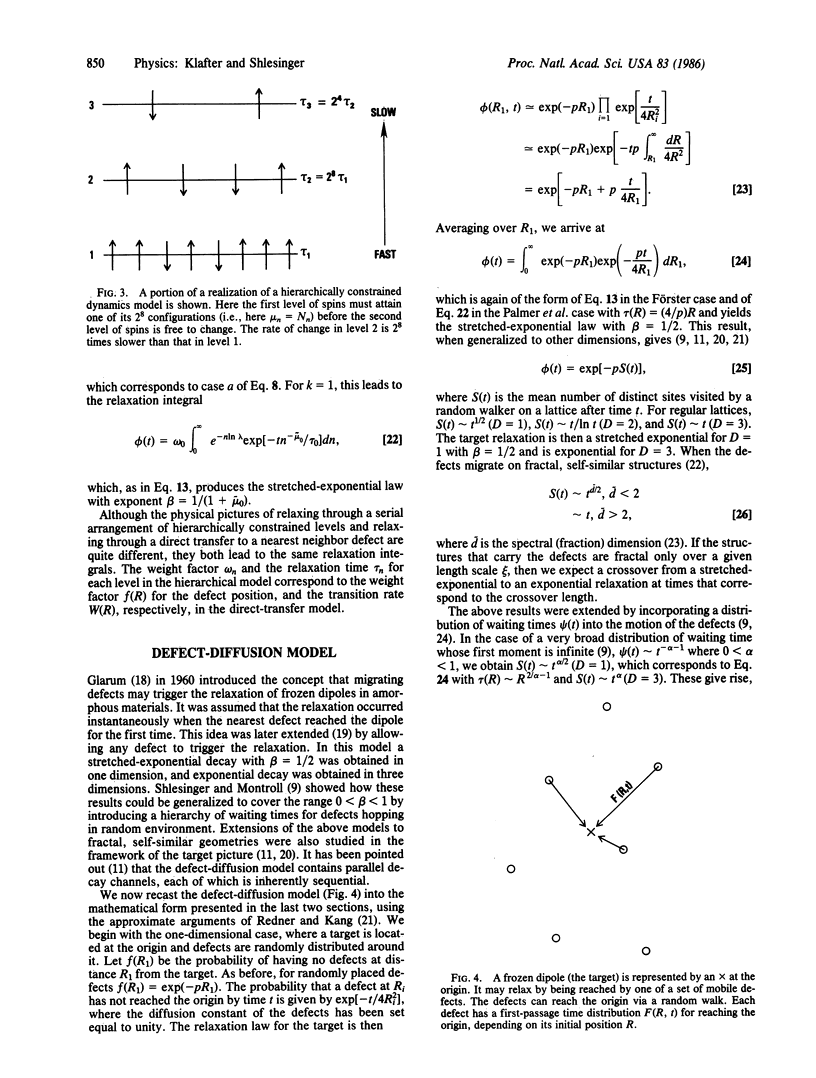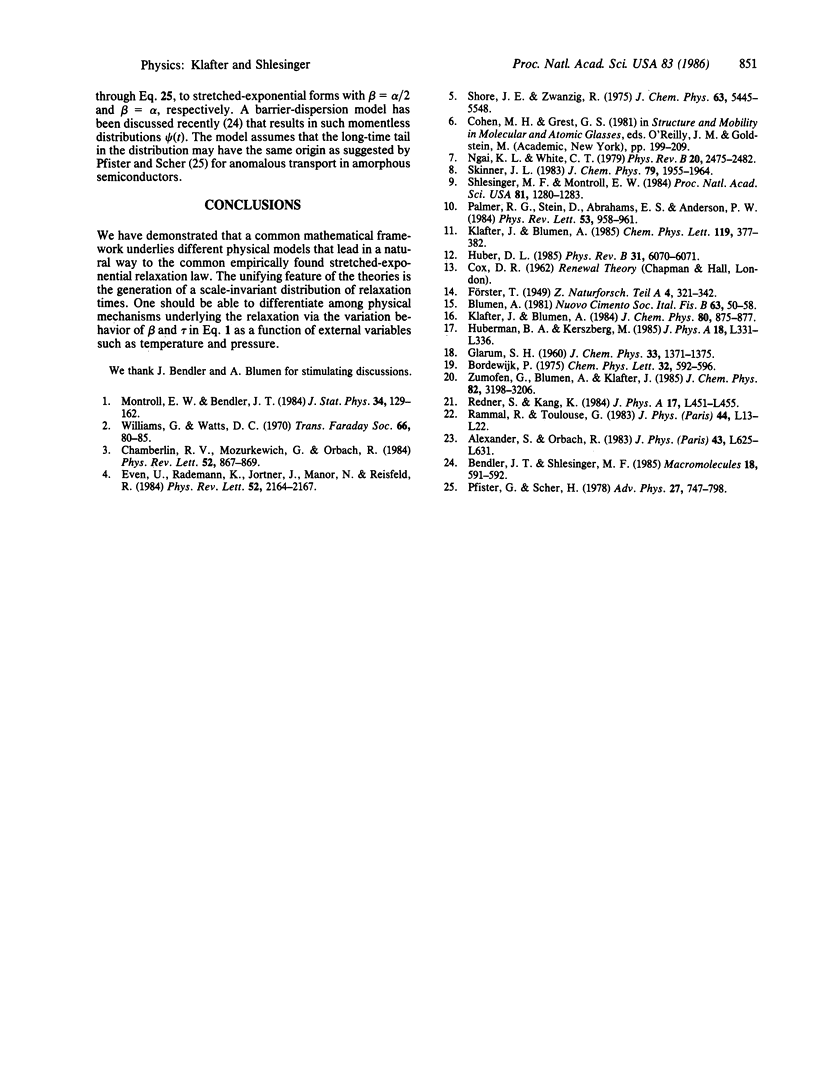Abstract
Empirical evidence has accumulated showing the wide occurrence of a stretched-exponential relaxation decay law for many diverse condensed-matter systems. Several theories based on different physical mechanisms have been successful in deriving the stretched-exponential decay law in a natural way. Three of these theories, the direct-transfer model, the hierarchically constrained dynamics model, and the defect-diffusion model are shown here to have an underlying common mathematical structure.
Keywords: scale invariance, hierarchical constraints, direct transfer, defect diffusion
Full text
PDF



Selected References
These references are in PubMed. This may not be the complete list of references from this article.
- Huber DL. Statistical model for stretched exponential relaxation in macroscopic systems. Phys Rev B Condens Matter. 1985 May 1;31(9):6070–6071. doi: 10.1103/physrevb.31.6070. [DOI] [PubMed] [Google Scholar]
- Shlesinger M. F., Montroll E. W. On the Williams-Watts function of dielectric relaxation. Proc Natl Acad Sci U S A. 1984 Feb;81(4):1280–1283. doi: 10.1073/pnas.81.4.1280. [DOI] [PMC free article] [PubMed] [Google Scholar]


